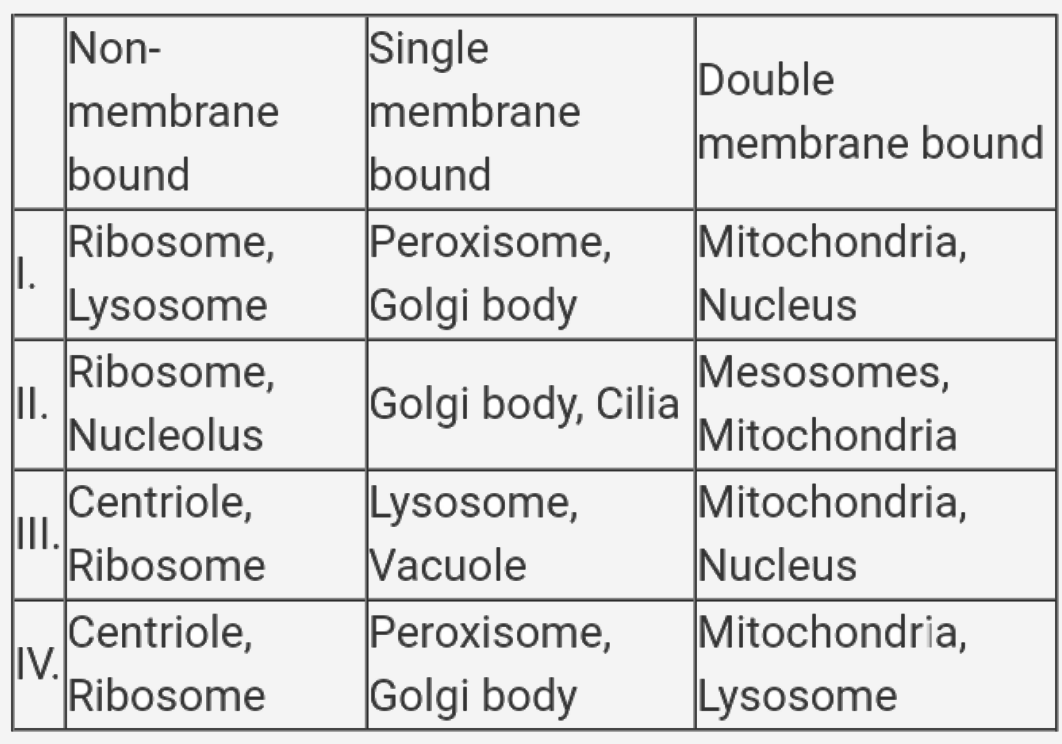Which is correct about cell wall of bacteria and fungi ? Both have
Glycopeptide
N-acetylglucosamine
N-acetylglcosmine and cellulose
Chitin
The correct Answer is:B
To answer the question about the cell wall composition of bacteria and fungi, we will analyze the components of each organism's cell wall step by step.
1. Identify the Cell Wall Composition of Bacteria:
- The cell wall of bacteria is primarily composed of peptidoglycan.
- Peptidoglycan itself is made up of two main components: N-acetylmuramic acid and N-acetylglucosamine.
2. Identify the Cell Wall Composition of Fungi:
- The cell wall of fungi is mainly composed of chitin and some other polysaccharides.
- Chitin is a polymer derived from N-acetylglucosamine.
3. Analyze the Options Given:
- Option A: Glycopeptide - This is incorrect because neither bacteria nor fungi have glycopeptides in their cell walls.
- Option B: N-acetylglucosamine - This is correct because both bacteria (as part of peptidoglycan) and fungi (as part of chitin) contain N-acetylglucosamine.
- Option C: N-acetylglucosamine and cellulose - This is incorrect because true fungi do not have cellulose in their cell walls, and bacteria do not have cellulose either.
- Option D: Chitin - This is incorrect because chitin is only present in fungi and not in bacteria.
4. Conclusion:
- Based on the analysis, the correct answer is Option B: N-acetylglucosamine, as it is the only component that is present in the cell walls of both bacteria and fungi.
Final Answer:
The correct option is B: N-acetylglucosamine.
- The cell wall of bacteria is primarily composed of peptidoglycan.
- Peptidoglycan itself is made up of two main components: N-acetylmuramic acid and N-acetylglucosamine.
- The cell wall of fungi is mainly composed of chitin and some other polysaccharides.
- Chitin is a polymer derived from N-acetylglucosamine.
- Option A: Glycopeptide - This is incorrect because neither bacteria nor fungi have glycopeptides in their cell walls.
- Option B: N-acetylglucosamine - This is correct because both bacteria (as part of peptidoglycan) and fungi (as part of chitin) contain N-acetylglucosamine.
- Option C: N-acetylglucosamine and cellulose - This is incorrect because true fungi do not have cellulose in their cell walls, and bacteria do not have cellulose either.
- Option D: Chitin - This is incorrect because chitin is only present in fungi and not in bacteria.
- Based on the analysis, the correct answer is Option B: N-acetylglucosamine, as it is the only component that is present in the cell walls of both bacteria and fungi.
The correct option is B: N-acetylglucosamine.
Topper's Solved these Questions
- KINGDOM FUNGI-MULTICELLULAR DECOMPOSERSBOOK - DINESH PUBLICATION ENGLISHCHAPTER - KINGDOM FUNGI-MULTICELLULAR DECOMPOSERSEXERCISE - CYG
19 Videos
- KINGDOM FUNGI-MULTICELLULAR DECOMPOSERSBOOK - DINESH PUBLICATION ENGLISHCHAPTER - KINGDOM FUNGI-MULTICELLULAR DECOMPOSERSEXERCISE - CYG
19 Videos
- INTRODUCTION BOOK - DINESH PUBLICATION ENGLISHCHAPTER - INTRODUCTION EXERCISE - CYG
10 Videos
- KINGDOM MONERA (THE PROKARYOTES)BOOK - DINESH PUBLICATION ENGLISHCHAPTER - KINGDOM MONERA (THE PROKARYOTES)EXERCISE - CHECK YOUR GRASP
20 Videos
Similar Questions
The wall of bacteria consists of
View SolutionCell wall of both bacteria and cyanobacteria contians
View SolutionWhich one occurs in cell walls of Gram (+) bacteria only ?
View SolutionThe link between bacteria and fungi is
View SolutionWhich is not correct about sustentacular cells
View SolutionWhich of these is correct about cell organelles in the cell of a mouse ?

View SolutionWhich statement is not true about bacteria ?
View SolutionWhich is correct about cell theory in view of current status of our knowledge about cell structure ?
View SolutionWhich is correct about energy changes in living cells ?
View SolutionCell wall of bacteria// cyanobacteria possesses
View Solution
